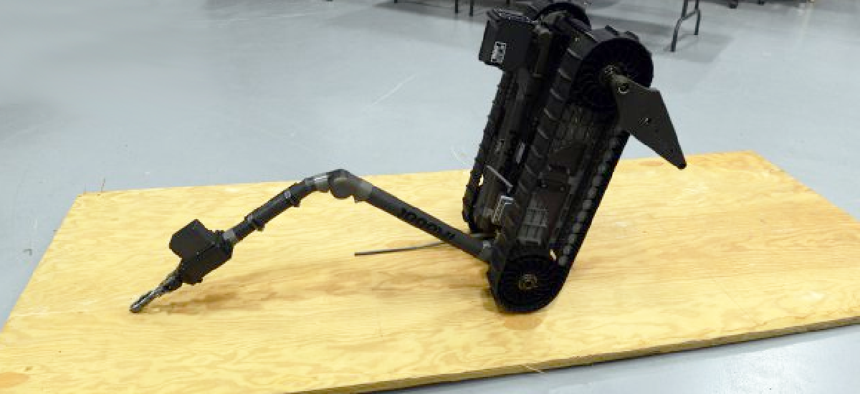Self-righting software for tipped-over robots


Connecting state and local government leaders
An engineer with the Army Research Lab is developing software to help robots right themselves when they fall over.
While robots are becoming key contributors in military operations, they're far from perfect. Often, if they fall over, their soldier-controllers must send complex commands to try to right them -- or enter a dangerous environment to retrieve them.
That’s what Army Research Lab’s robotics engineer Chad Kessens discovered from discussions with soldiers who used bomb-detecting robots to clear rooms of explosives or to investigate suspected improvised explosive devices along the roadside. He also learned that if a robot is operating outside a soldier’s line-of-sight, its operator may not know which way the robot is facing nor how to right it. In such cases, tipped-over robots not only can’t complete their missions, they can become a liability.
To address this problem, Kessons is trying to develop software to help autonomous robots to right themselves. “I found several solutions, each for a specific robot,” he said, but because the Army uses several robot models and new systems are regularly fielded, he wanted a more unified approach that would work with many kinds of robots. “That includes tracked robots, legged robots, flying robots and also very small robots that don't have a lot of memory or processing power,” he said. “My work has been aimed at developing a framework that can be applied to any robot. You give me a robot, and I give you a self-righting solution for the robot, assuming it is physically possible."
Kessens is currently developing software that will instruct robots how to right themselves that can be loaded onto the robot wherever it goes. Based on the particular orientation in which the robot finds itself after tipping, the software will provide the robot a specific set of instructions. This solution will be perfect for smaller robots with limited memory that might not have the advanced processing power to calculate self-righting solutions.
The difficulty in developing a unified approach, however, is that each robot has different extremities and features. For example, Kessens must account for robot size, weight, arms, wheels and/or flippers, and the software must know the sizes, lengths and weight of those extremities. According to Kessens, any and all moving parts of the robot could be manipulated to help the robot right itself.
"We want to take these robots and give them enough autonomy that they act more like a well-trained dog, where the soldier … doesn't have to manage every joint motion and every single activity that the robot is doing," he said.
This capability is still a ways away from operational, but the self-righting technology is a step toward that goal.




